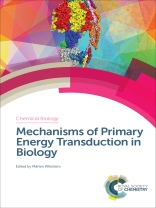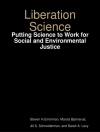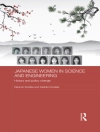This book describes the events of primary energy transduction in life processes. Life as we know it depends on pumping protons across membranes. New tools to study the protein complexes involved has led to recent intensified progress in the field.
Primary Energy Transduction in Biology focusses on recent structural results and new biophysical insights. These have been made possible by recent advances in high-resolution protein structures, in physical techniques to study reactions in real time, and in computational methods to study and refine both structures and their dynamics. Written and edited by leading experts, chapters discuss the latest key questions in cell respiration, photosynthesis, bioenergetics, proton transfer, electron transfer and membrane transport.
Biochemists, biophysicists and chemical biologists will find this book an essential resource for a complete understanding of the molecular machines of bioenergetics.
Tabella dei contenuti
Making Maquette Models of Bioenergetic Structures; Structure of Respiratory Complex I: ‘‘Minimal’’ Bacterial and ‘‘De luxe’’ Mammalian Versions; Structure and Function of Respiratory Complex I; Multi-scale Molecular Simulations on Respiratory Complex I; Coupling Hydride Transfer to Proton Pumping: the Swiveling Mechanism of Transhydrogenase; The Na1+-Translocating NADH: Ubiquinone Oxidoreductase (Na1+-NQR); The bc1 Complex: A Physicochemical Retrospective and an Atomistic Prospective; Advances in Understanding Mechanism and Physiology of Cytochromes bc; Life and Death of Cytochrome c Oxidase: Influence of Subunit III on the D pathway, Proton Backflow and Suicide Inactivation; Computational Means of Assessing Proton Pumping in Cytochrome c Oxidase (Complex IV); Water Oxidation by PSII: A Quantum Chemical Approach; Respiratory Supercomplexes in Mitochondria; Structure, Mechanism and Regulation of ATP Synthases
Circa l’autore
Mårten Wikström received his MD, Ph.D. at the University of Helsinki in 1971, after which he spent a year as a postdoctoral researcher at the University of Amsterdam with Prof. E. C. Slater. In 1975−1976 he was visiting associate professor at the University of Pennsylvania with Prof. Britton Chance. He worked as an assistant professor at the University of Helsinki until 1983, when he was appointed to a personal Chair in medical chemistry (changed to physical biochemistry in 2002). In the period 1996−2006 he was Research Professor of the Academy of Finland. From 1998 to 2013 he was Research Director of the Structural Biology and Biophysics Program of the Institute of Biotechnology. He retired in 2013 but continues as Emeritus Professor. He is a recipient of the Anniversary Prize of the Federation of European Biochemical Societies (FEBS) in 1977, the Scandinavian Anders Jahre Prize in medicine in 1984 and 1996, and the David Keilin Prize and Medal (British Biochemical Society) in 1997, and he gave the Peter Mitchell Medal Lecture in 2000. He is an elected member of Societas Scientiarum Fennica (1982), the European Molecular Biology Organization (1985), The Royal Swedish Academy of Sciences (chemistry, 1992), and Academia Europaea (2010). His research interests are in molecular bioenergetics, membrane proteins, electron transfer, proton translocation, and mitochondrial diseases.












